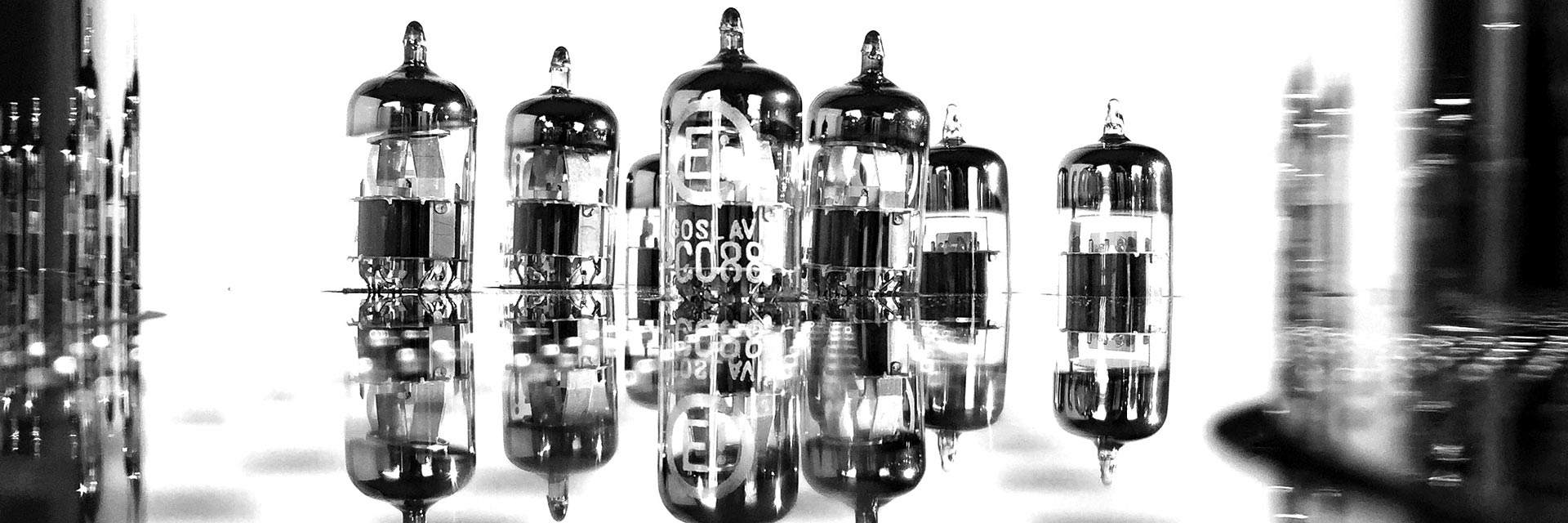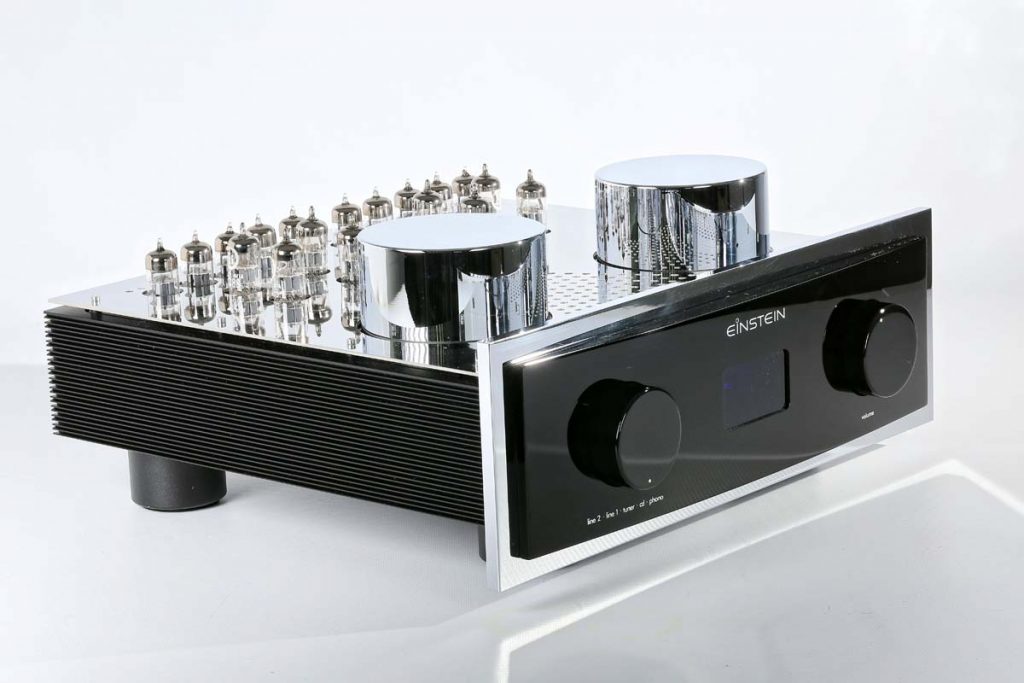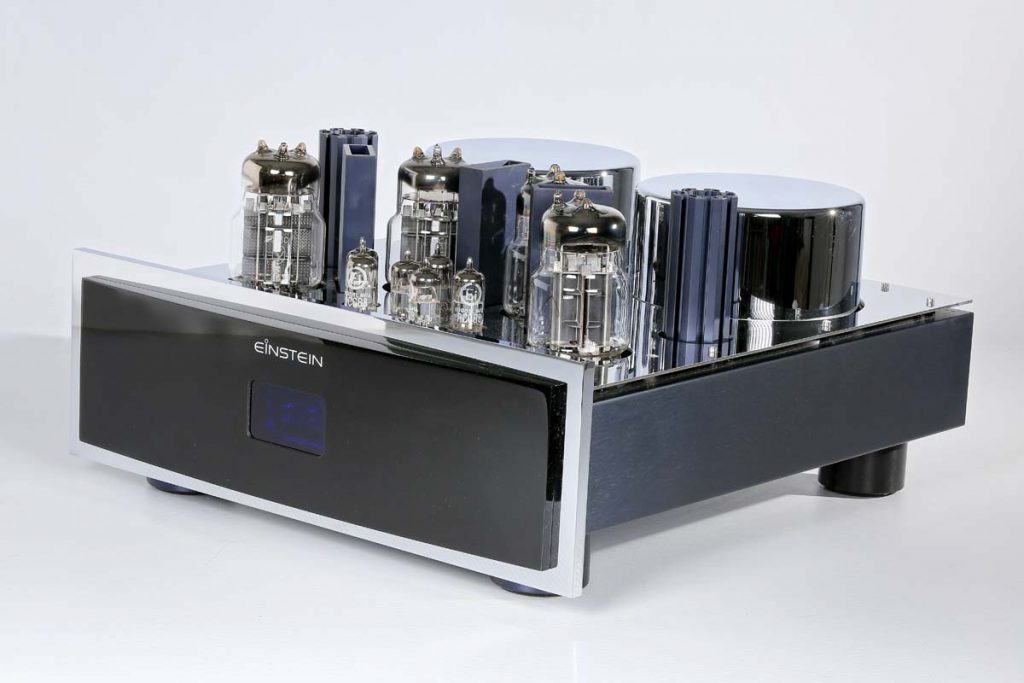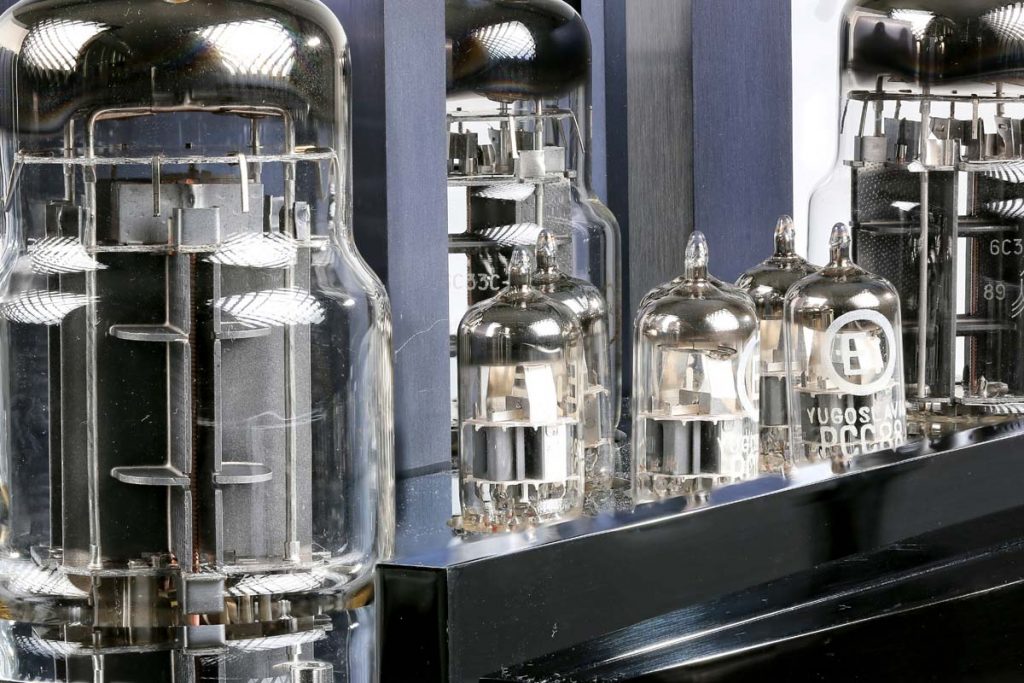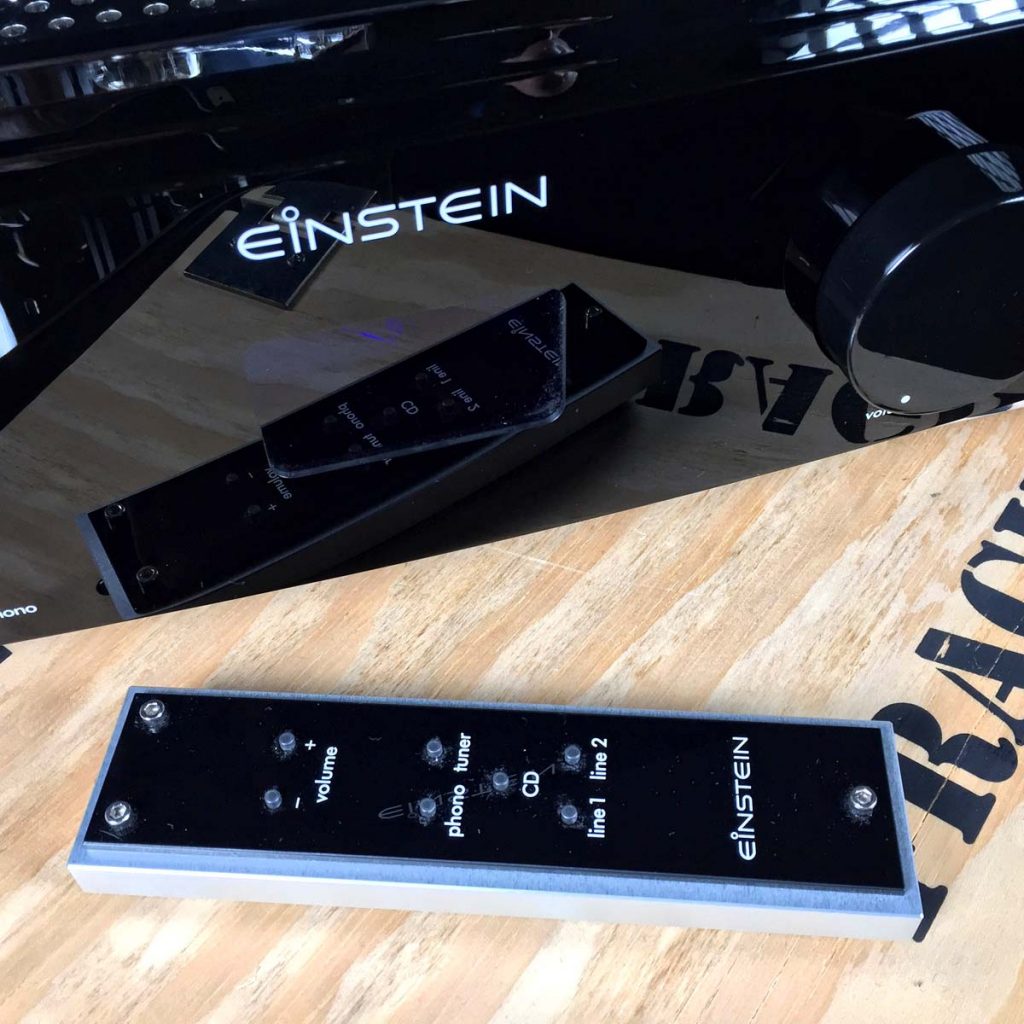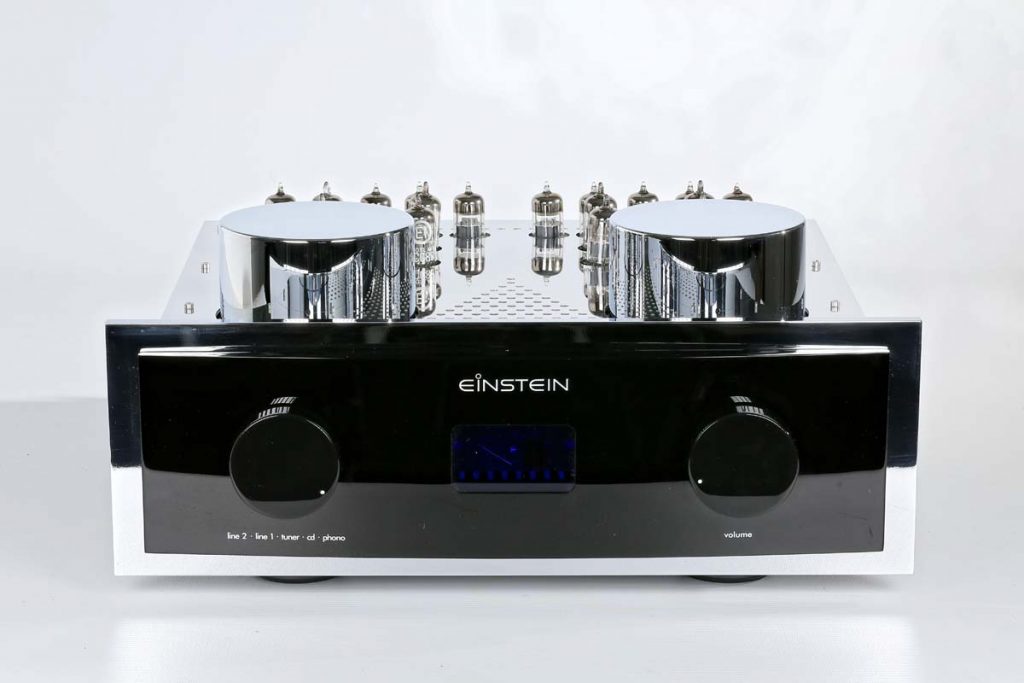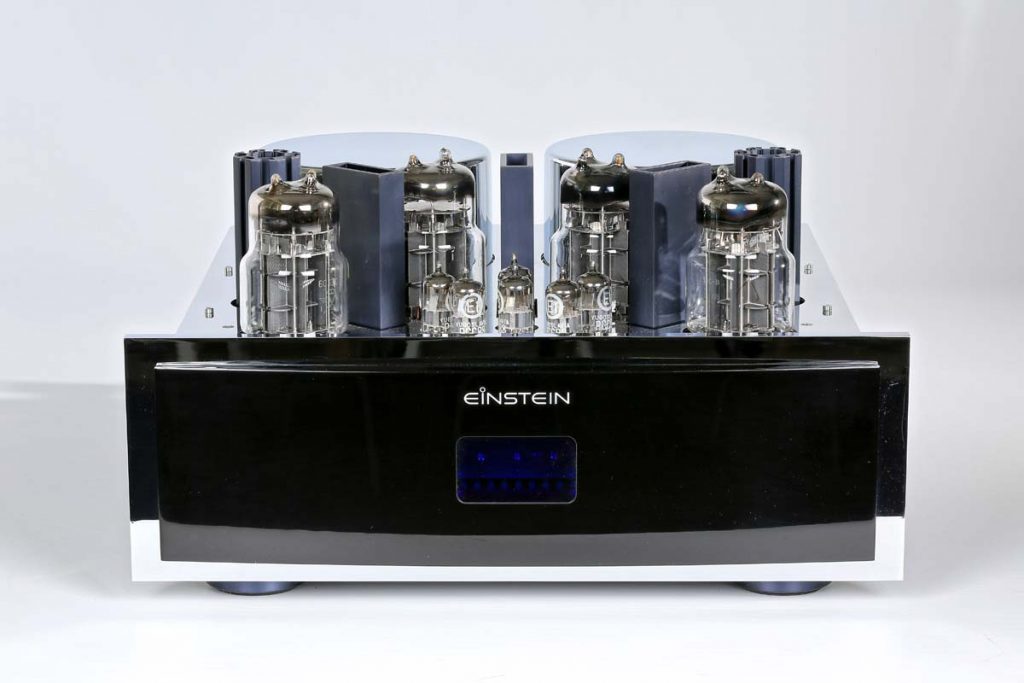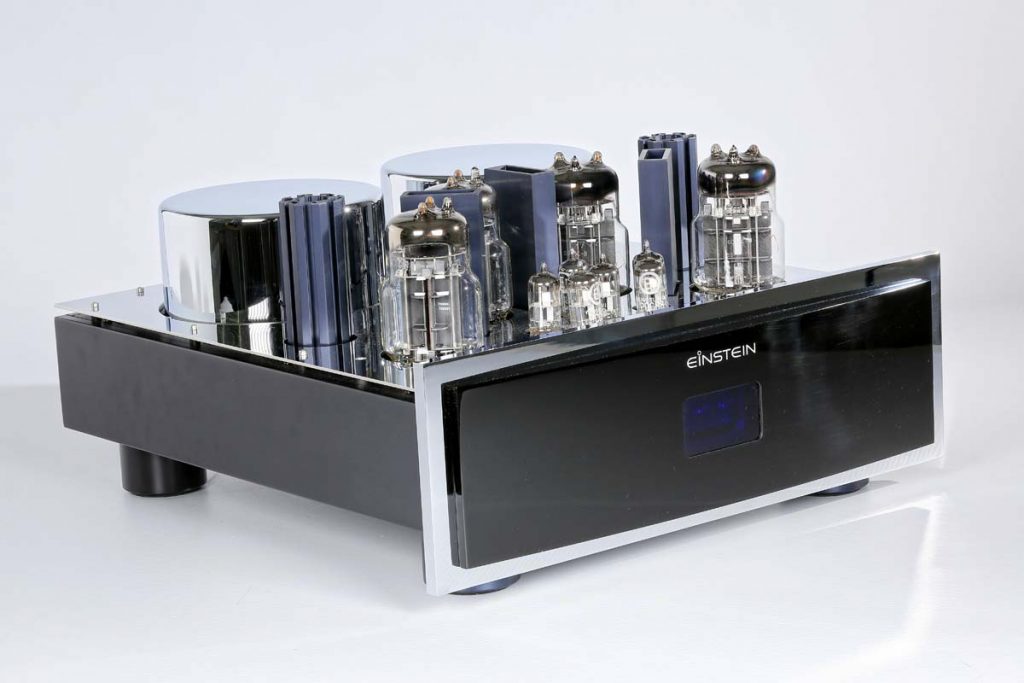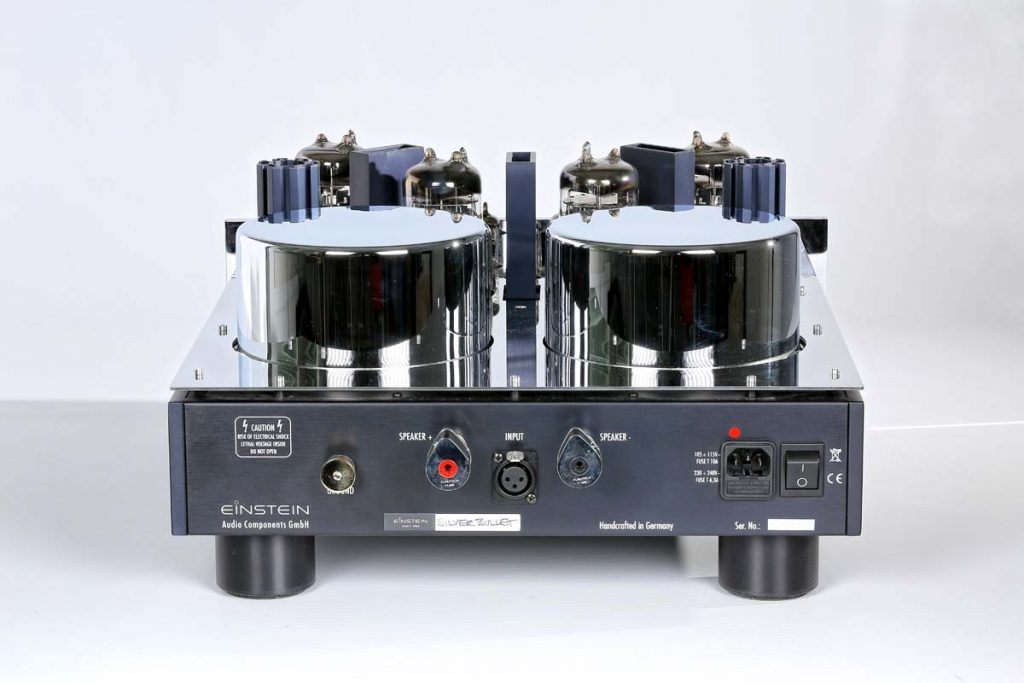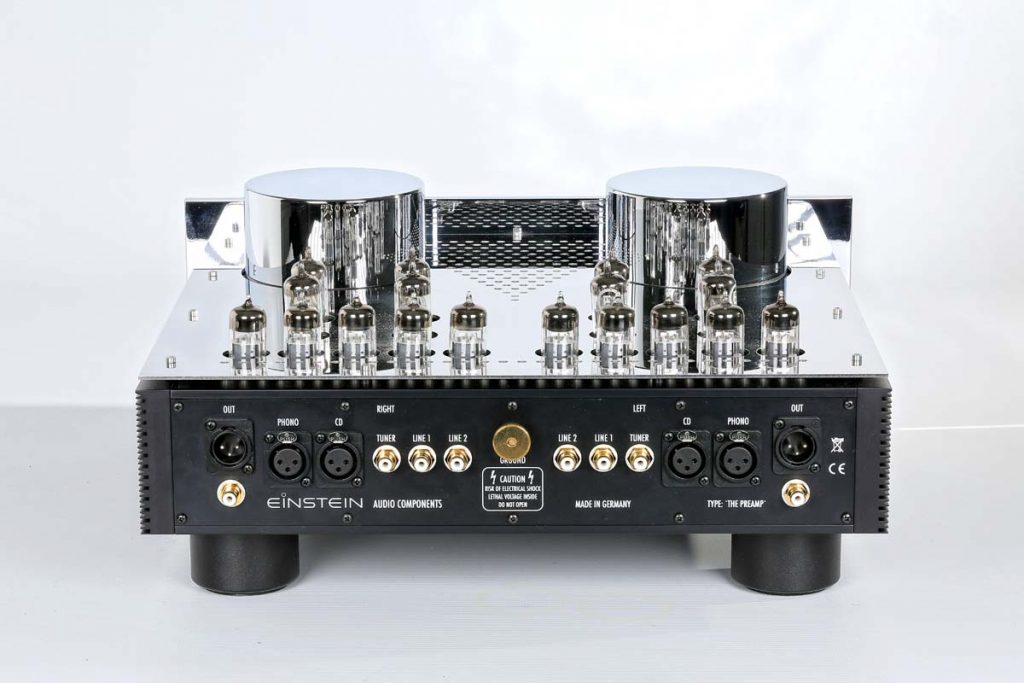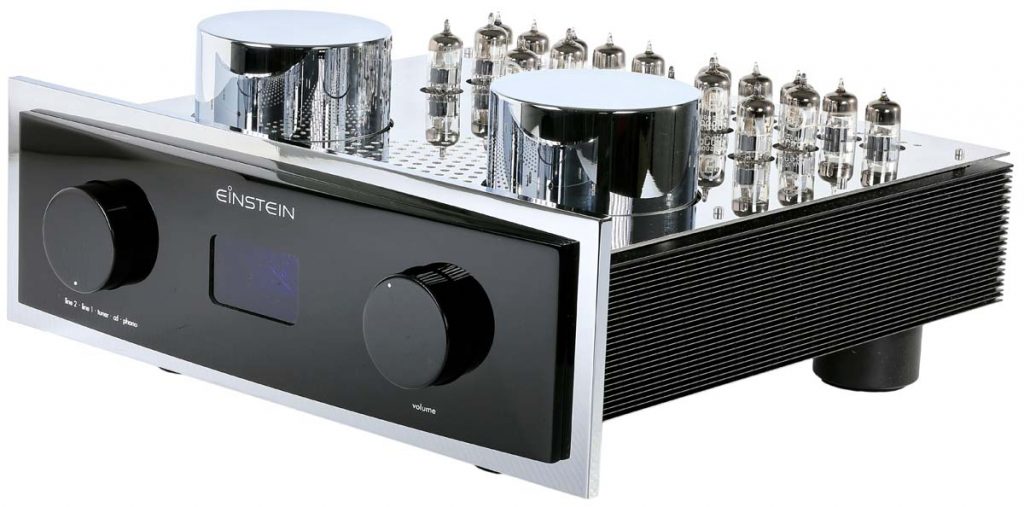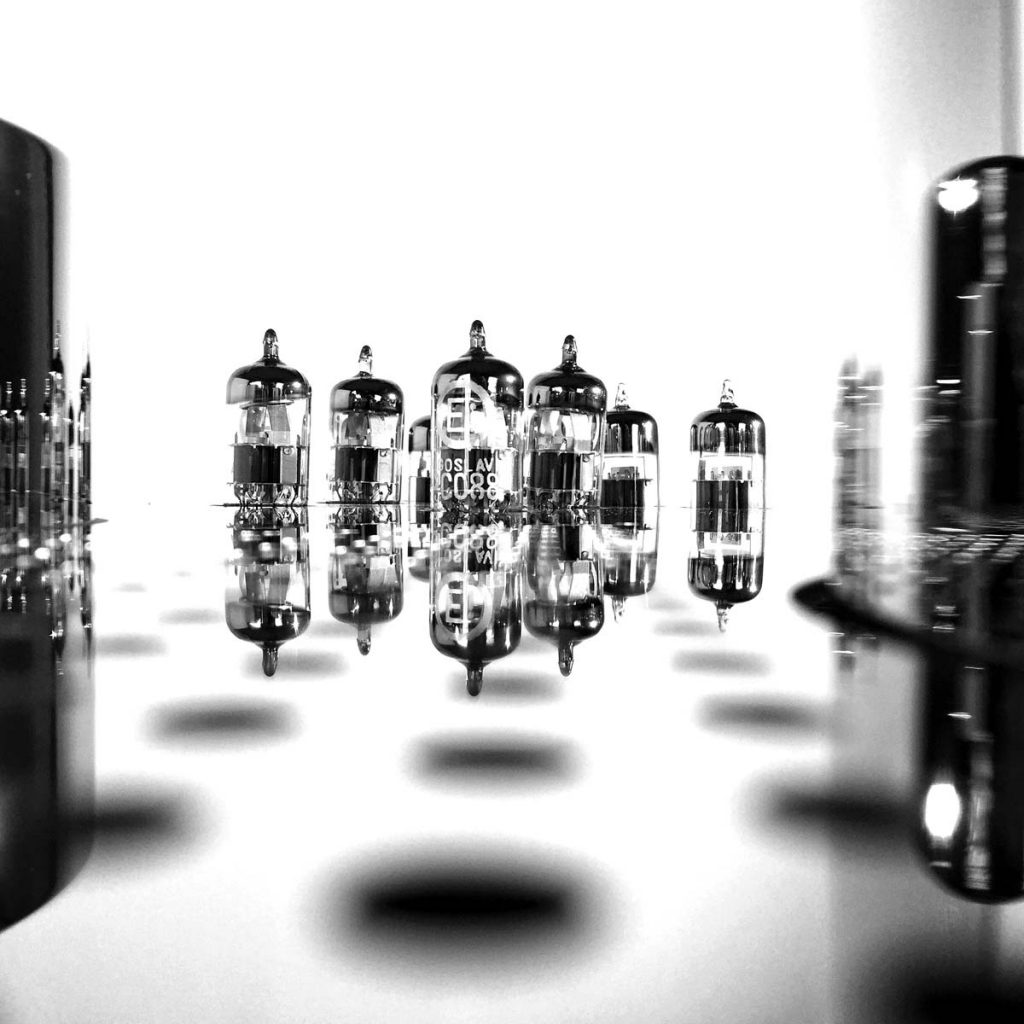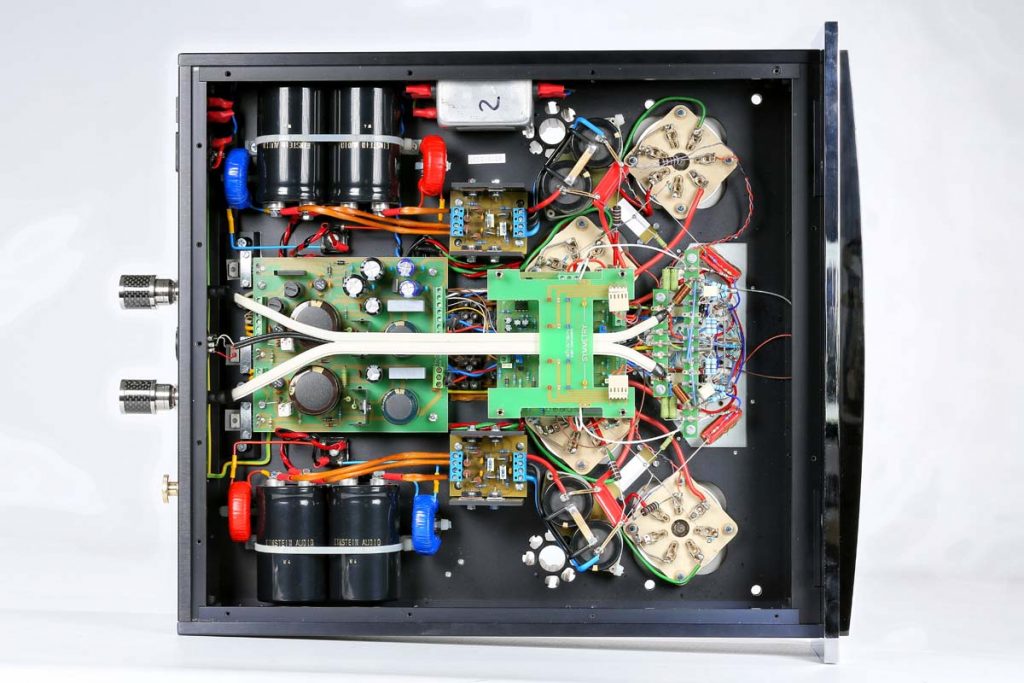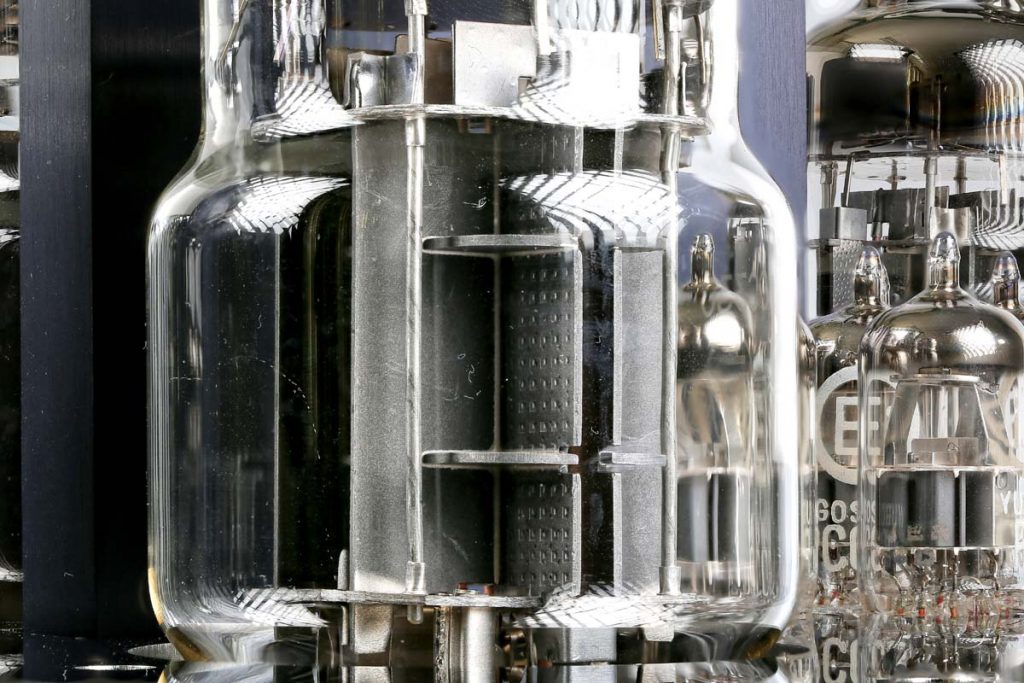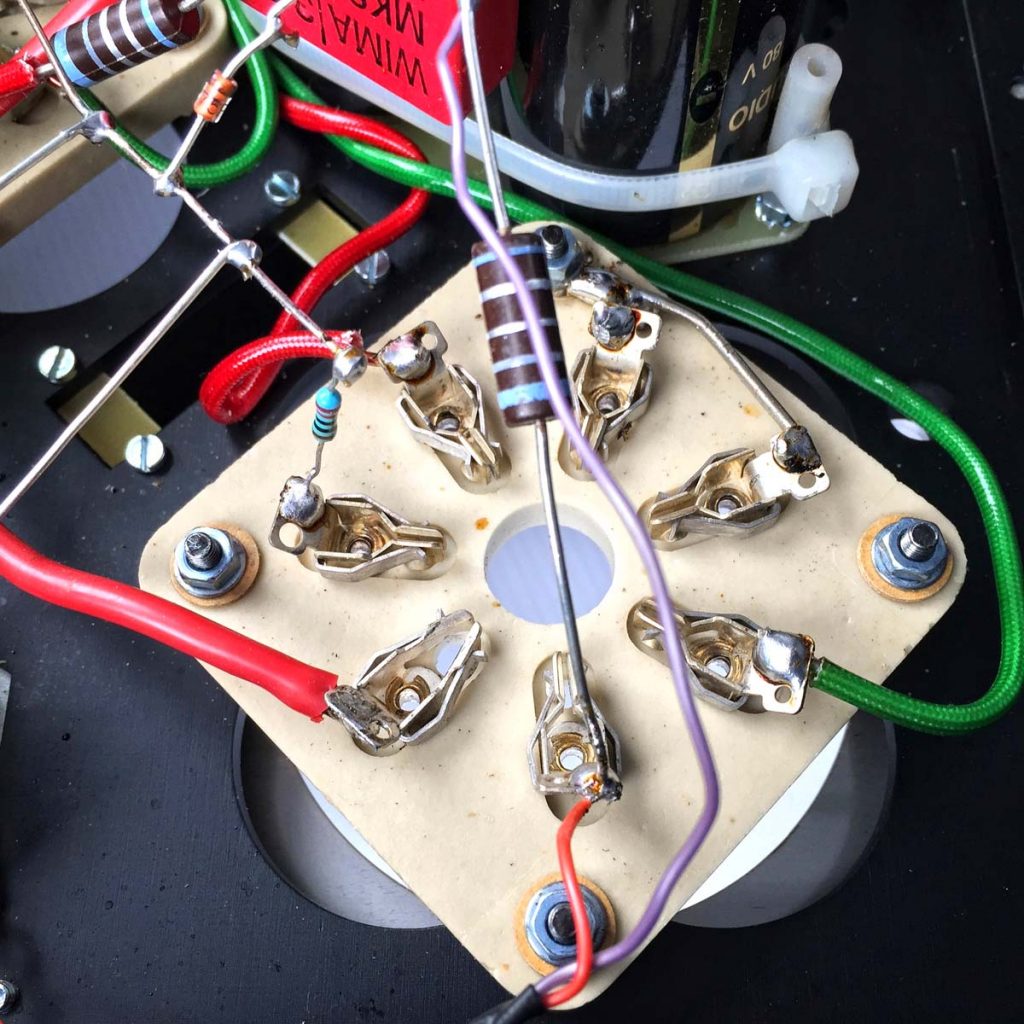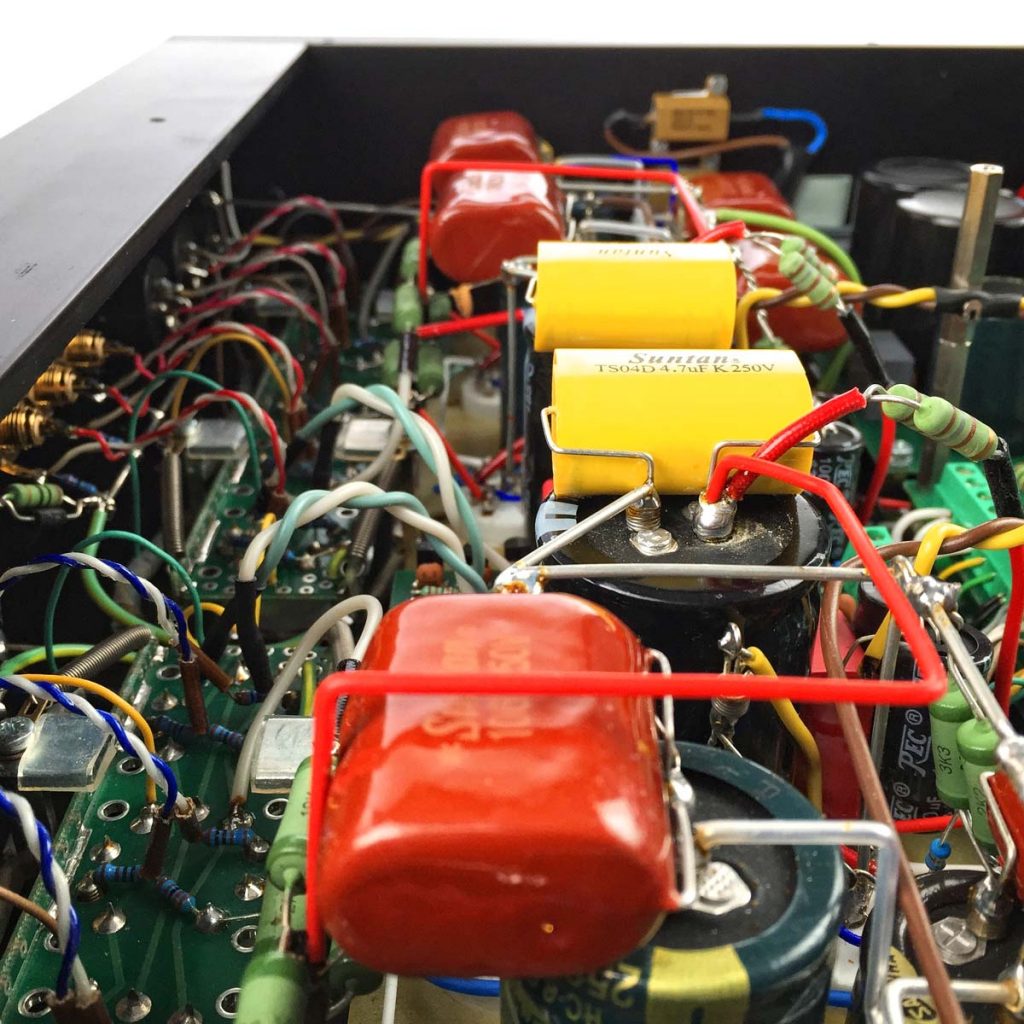Wrapping You around its Finger
This trio of amps can bend time and space: It helps the listener slow down, submit to the music, fade into the background, dive into a dynamic and spacious sound that emerges from a deep blackness.
True luxury doesn’t just happen. True luxury is deliberate. For me, luxury means, for instance, being able to enjoy music of an extremely good quality at home. Even after decades of working professionally with terrific and often convenient music machines, I am still willing to compromise in other areas—or even make sacrifices—if it means I’ll have the best possible sound.
This is running through my mind as I approach a large tube amplifier trio from Einstein that consists of the new mono amp The Silver Bullet and the not so new but still current The Preamp. And I ask myself what will I have to sacrifice here in order to reach the pinnacle of sound.
In principle, working with Einstein’s top models is easy and falls in line with what the practiced high-end listener already knows, Volker Bohlmeier indicates when he says: “Negligence is punished, careful attention is rewarded.” But the man who heads production at Einstein promises an even better payoff in sound than is customary in exchange for greater care.
For me, luxury also means not always having to worry about technical details. I like to leave that to the colleagues (see box) and concentrate on the audiophile experience. How exactly do sacrifice and reward look? Rushing things and taking a lax approach will have to be sacrificed, for instance. The trio doesn’t like either of these. This is mainly due to circuit-based special features. Both The Preamp and The Silver Bullet are two of the most radical hi-fi machines out there with the ability to make one’s day—no, one’s life— more beautiful. In return, they have a right to expect some respect and attention. But not for having a thousand knobs or even an app. To fully operate all three components, Einstein needs no more than five switches and knobs, all distributed nicely around the machine. And that is meant quite literally: The new amps have an on/off switch on the back, with the switch for the preamp under the front left, as it is on several other Einstein classics, too. The distinctive, elegant and simply unmistakable front panel of the preamp features a display that isn’t really one at all: when in operation, one blue LED shines in the small darkened display window. The source is selected on the left, the volume on the right—and both twist knobs provide direct access to true circuit specialties (see extra box). The expertly crafted solid knobs offer a pleasant tactile experience — high-end for the fingers as well. It really is a joy to turn them.
Too much action with the source-selector knob should, however, be avoided at all costs. After all, it is here that the radical minimum circuitry from brilliant Einstein developer Rolf Weiler is most noticeable. The customary switching between two active sources doesn’t seem to take effect on The Preamp for the first few seconds. Only after a brief reflection period does The Preamp gradually fade out the first source and fade in the new one. This highly unusual process takes so long that nervous nellies, compulsive tinkerers and other exhibit visitors may have already had another go at the knob before the actual switch was made. The operation manual states: “Please use our preamp as a component for listening to music and not as a means for testing cables.” Nothing more needs to be said—even though the switch time (I would call it “flextime”) takes only a fraction of the “approximately one minute” indicated.
And while we’re here pointing a raised finger at The Preamp: just don’t let anyone flick their fingers against the row of tubes on the back! That’s where they are, those flextime circuits, in the form of tubes: 10 type E88CC, one per input jack, in two rows of five and kept gently vibrating on springs. While the dual swing quintet is reminiscent of Jell-O, that amusement park ride swingboat or LP12 when exposed to mechanical force, the sub-chassis principle seems to work splendidly. Because all told, The Preamp sounds simply fabulous—oops, did I give too much away? Certainly not. You spotted the price tag earlier and were already expecting that kind of review, weren’t you? Yes, having exquisite taste and demanding only the best has always been expensive. But whether you believe it or not: With The Silver Bullet, Einstein doesn’t focus on platitudes like outrageous performance details or compulsive five-digit price tags or on electricity rates or cleaning restrictions for personnel. On the contrary, it’s about nothing less than its name — The Silver Bullet. But how wonderfully romantic hi-fi can sometimes be: We’re following the “royal road” to music… with OTL tube amplifiers that tip the scale at 30 kilograms, even without the customary transformer. That’s 30 kilos each.
Those spoiling for a fight or always needing a victory will probably liken The Silver Bullet to the term “super weapon,” derived from the silver bullet used to kill werewolves. I personally don’t care for that, however, though some of my preferred music choices would presumably suggest otherwise. As a peaceful person, I prefer to take Einstein’s “royal road” to perfect music playback. There are a few things to consider to ensure the journey is a pleasant one. Even the nicest path is nothing without proper shoes and a few experienced companions. For the two monos, in particular, any smooth, low-resonance spot is suitable as long as there is plenty of ventilation for it to do its work. I can recommend the “slotted” Quadraspire-Rack Reference X as well as the bases from Solidsteel and Subbase. For cables, I would go for the “Wild” series from AudioQuest (FIDELITY No. 25), as befits this festive occasion. It goes without saying that for those wanting to elicit the full potential of the Einstein combination there is a symmetrical link between the preamp and power amp.
High-impedance loudspeakers are more likely the ideal partners for The Silver Bullet than energy guzzlers with close to zero impedance. Due to their circuit principle, this point is where OTL amplifiers are rightly considered to be picky, even though, in practice, The Silver Bullet has virtually astonishing stamina and doesn’t simply take anything that shows up at the first meeting.
A B&W 803 Diamond D3 and my Stereofone Dura really let the power amp loose. Thanks to the outstanding Einstein qualities—clarity and captivating, lightning fast dynamics—with certain genres I am still prone to move the level controller mentioned earlier just a tad clockwise until it makes that “click” and the brilliant protective circuit of The Silver Bullet gives me a brief, not entirely unexpected break. And 30 seconds later it picks up again as if nothing happened. Einstein considers “one hundred percent reliability a matter of course” even for the technically sophisticated OTL power amp. And what about its teamwork skills? For the absolute highest highs—including almost impossible level reserves—avid transducers are a good match, including those from Avantgarde Acoustic, DeVore Fidelity, Live Act Audio, MFE and Odeon, just to mention a few potential candidates in alphabetical order.
On the other hand, for an entirely different, overall more relaxing (or ethereal) sound, combinations with larger panel emitters can be used, such as those from MiTec or Silverstatic. Alternatively, unparalleled passive speakers from Manger Audio are a top choice as are exquisite small monitor speakers from Audiomachina, Audiovector, Capriccio Continuo or Diapason. In any event, what is absolutely fascinating is how quickly and controlled the Einstein combination plays the music. Amazing, too, how uncomplicated it is for The Silver Bullet to engage in a musically joyous liaison with any first-rate loudspeaker. In a class of their own as soloists, the synergetic team of Einsteins seems to be saying that they aren’t simply bringing music to my ears, they’re going about it in a very deliberate way: with maximum clarity, without any strain whatsoever, with the utmost care and attention to the very last detail. As if the amplifiers are generating the energy to spur themselves on! From capturing the overall acoustics of a huge stage to the slightest variation in a seemingly monotone rhythm pattern — only truly great high-end audio equipment can offer such an impeccable three-dimensional panoramic experience. Without a doubt, The Preamp and The Silver Bullet are members of this illustrious circle.
Of course, given the proper quality of the recording and auxiliary devices, the Einstein flagships create the sensation of capturing music in a perfectly intact totality. Marvelous! Even rhythmic and highly complex sound nuances— such as those in 800% Ndagga by Jeri-Jeri—are so effortlessly and precisely decoded and then virtually projected as a holograph into the living room that I have at times almost completely lost sight of time and space. There is nothing to disrupt the flow of music. And the extreme openness of the sound does the rest, instantly putting all thoughts of the technology out of mind. What the brand with the famous name projects into the listening room is incredible. Inspired, I step along this two-lane “royal road” for audiophiles to follow the music.
Technology I
Einstein The Preamp
Tubes sound good! As the first tubes were manufactured in large-scale production during the 1920s, this was one of the strongest compliments equipment could receive. What it referred to was the result of nudging an amplifier tube to produce “ringing” sounds. This was caused by the mechanical vibrations of the grille that could be heard in headphones and later in loudspeakers. It was considered the standard in high sensitivity. Microphonics, the proper term for this phenomenon, is naturally unwelcome when it comes to amplification of a pure audio signal. As a result, high-end manufacturers are highly selective in the constructing of tubes and the use of mechanical decoupling in their efforts to prevent microphonic effects. With The Preamp, Einstein was meticulous in preventing interference from the tubes by simply taking mechanical precautions. With what is a considerably more robust and larger housing compared with its predecessor (The Tube), The Preamp allows placement of a special sub-chassis to decouple input tubes. In addition, undesirable heat from the elements is kept at a distance, which minimizes unnecessary noise. The fully symmetrical signal routing allows the audio signal to be amplified without interference across the entire circuitry to the output jacks. External interference—asymmetrical signals such as humming or crackling—are removed in the unit through the symmetrical signal routing. Potential phase problems are also completely eliminated. Professional studio technology sends its regards. The Preamp by Einstein is also exceptionally well designed for audiophiles. Thanks to extremely high (and low sound) high frequency triodes with type PCC88 grilles, only a few elements are needed to create linear, two-stage amplification without any detours. With its comparatively low internal resistance and linear amplification into the megahertz range, the PCC88 is descended from TV tuner technology and ensures a low impedance output of The Preamp. That means there’s no problem even when longer cables are needed to reach a more distant power amp. One very special—and in my experience, unique—goody can be seen in the source switching. It supports the Einstein philosophy of creating as short a signal path as possible: Every input of The Preamp has “its” own tube. When a source is selected, the signal path is not affected: Only the tube designated for that input is heated and put into operation; the other, unheated, tubes don’t amplify. The advantage: The direct signal path of the source is not impeded by the relay, switches or the switching transistor. To prolong life (and better sound), hectic back and forth switching among inputs should be avoided, however. Two more Einstein delicacies are left to be mentioned: the power supply line and volume control. Primarily to avoid noise interference, The Preamp’s power jack is situated very close to the power supply: on the left, lower part of the housing, where the on/off switch is also located. A firstrate power cord with matching angle plug is included with The Preamp as standard. Volume control, on the other hand, does not cross the signal path, which provides incredibly good signal-to-noise ratio from interference. As a result, the entire dynamic bandwidth is delivered, even at a low volume, and there is no audible static or humming in the listener’s ear when the knob is turned up all the way.
Erich Engel
Technology II
Einstein The Silver Bullet
It is generally known that every audio signal consists of positive and negative deflections in a more or less sinusoidal curve. To amplify such a signal, the amplifying voltage or current has to follow this curve’s peaks and valleys—the more precisely it does this, the better. Tubes were invented specifically for this task. It quickly became evident that the technical design of such tubes has a direct impact on the playback quality of the amplified signal situated at its input—the grille. Not only did countless new tubes arise from this finding, but their environment, the switching, has also been continuously improved. Tubes work with high voltages and comparatively low current. The resulting output can be considerable. But: A loudspeaker that needs low voltage and high current cannot be directly connected to the tube. The current-to-voltage ratio needs to be the other way around. The connection can only be made with a transformer. For this component, usually made of copper (for providing oscillations) and iron (for its transmission), iron is the limiting element. In audio applications with the highest transmitted frequencies, it needs to be remagnetized up to 20,000 times per second. Considering that output transformers’ weight in iron sometimes comprises more than half of the amp’s entire weight, many high-end fans are amazed that this concept even works. But there is a better way. To increase current, the positive and negative deflections of the audio signal are used: every half wave gets its own tube. This push-pull amplifier more than doubles the output current compared with an individual tube. While the transformer can work with less iron, this element is by no means superfluous. To accomplish precisely this increase in current, Einstein uses a Russian tube with outstanding features: Type 6S33S (written in Cyrillic: 6C33C) has its roots in Russian military production and uses an anode voltage of just 120 volts to allow a current of more than 600 milliampere. It functions with a double diode whose two systems are connected in parallel in a shared bulb.
In addition, it’s very robust design makes it particularly insensitive to vibrations– the keyword here is again microphonics. The icing on the cake for the concept of the tube push-pull amplifier comes in the form of The Silver Bullet OTL. Here, Einstein simply does without the output transformer that heavily influences sound. With a fully symmetric signal path (see the description of The Preamp), it is possible to lead the amplifying audio signal with its positive and negative deflections at the input through to the voice coil of the loudspeaker—with no detours between copper and iron and the resulting, inevitable distortion that can occur when the iron is remagnetized. The loudspeaker is thus directly connected to the power amp without an intermediate output transformer (OTL = output transformless) in the truest sense of the word. Chief developer Rolf Weiler makes use of a proprietary version of the historic circlotron circuit that was already proven in the predecessor model, The Final Cut. Einstein’s elegant circuit also draws from floating power supplies and floating, extremely robust voltage supplies. This version, however, involves two “symmetrical single-ended amplifiers with counter-rotating standby currents” that grip the loudspeaker using the anodes of the tubes rather than the cathodes. To eliminate damage to the sound converter from the towering tubes, which the transformer would normally prevent, all of the tubes used in The Silver Bullet undergo a very strict selection process. In addition, Weiler has also developed a special protective circuit that is not part of the signal path and quickly and reliably mutes the OTL amp. The technical data is consistently outstanding, particularly the damping factor of the OTL tube amp that is several times higher than the usual values of conventional designs. And the outstanding signal-to-noise ratio is achieved not only through fully symmetrical circuit configuration and careful selection of the components, but also through meticulous details such as an extra protected tunnel to channel the power supply through the device.
Erich Engel
Tube preamplifier
Einstein The Preamp
Inputs: Symmetrical line x 2 (XLR), asymmetrical line x 3 (Cinch) | Outputs: symmetrical (XLR), asymmetrical (Cinch) | Tubes: 10 x E88CC (inputs), 8 x PCC88 (outputs) | Dimensions (W/H/D): 43/20/41 cm | Weight: 21 kg | Warranty period: three years (tubes one year) | Price: € 17,000
OTL tube mono amplifier
Einstein The Silver Bullet
Power Output (12/8/4 Ω): 80/65/45 W | Tubes: 6 x E88CC (driver stages), 4 x 6S33S | Input: symmetrical (XLR) | Output: 1 x loudspeaker (screw terminal) | Dimensions (W/H/D): 43/24/50 cm | Weight: 32 kg | Warranty period: three years (tubes one year) | Pair price: € 42,000
Einstein Audio Components GmbH
Prinz-Regent-Straße 50–60
D44795 Bochum
Phone +49 234 9731512

